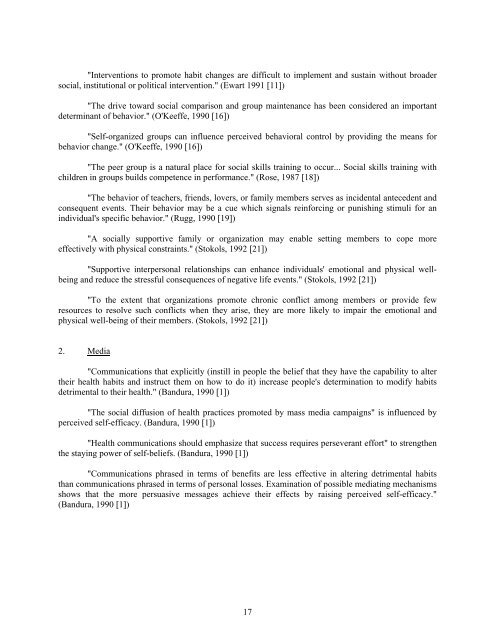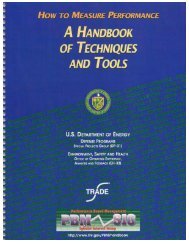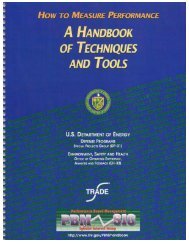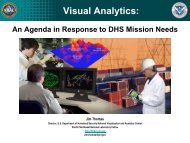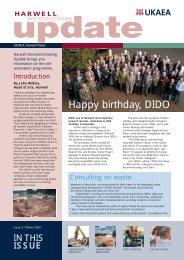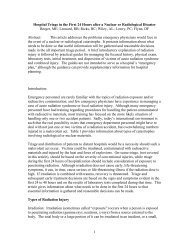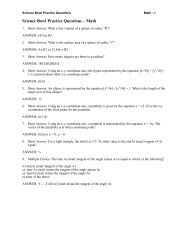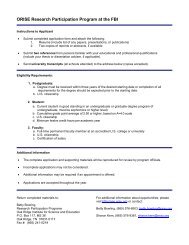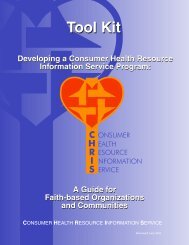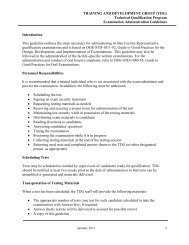Internal and external factors that encourage or discourage
Internal and external factors that encourage or discourage
Internal and external factors that encourage or discourage
You also want an ePaper? Increase the reach of your titles
YUMPU automatically turns print PDFs into web optimized ePapers that Google loves.
"Interventions to promote habit changes are difficult to implement <strong>and</strong> sustain without broader<br />
social, institutional <strong>or</strong> political intervention." (Ewart 1991 [11])<br />
"The drive toward social comparison <strong>and</strong> group maintenance has been considered an imp<strong>or</strong>tant<br />
determinant of behavi<strong>or</strong>." (O'Keeffe, 1990 [16])<br />
"Self-<strong>or</strong>ganized groups can influence perceived behavi<strong>or</strong>al control by providing the means f<strong>or</strong><br />
behavi<strong>or</strong> change." (O'Keeffe, 1990 [16])<br />
"The peer group is a natural place f<strong>or</strong> social skills training to occur... Social skills training with<br />
children in groups builds competence in perf<strong>or</strong>mance." (Rose, 1987 [18])<br />
"The behavi<strong>or</strong> of teachers, friends, lovers, <strong>or</strong> family members serves as incidental antecedent <strong>and</strong><br />
consequent events. Their behavi<strong>or</strong> may be a cue which signals reinf<strong>or</strong>cing <strong>or</strong> punishing stimuli f<strong>or</strong> an<br />
individual's specific behavi<strong>or</strong>." (Rugg, 1990 [19])<br />
"A socially supp<strong>or</strong>tive family <strong>or</strong> <strong>or</strong>ganization may enable setting members to cope m<strong>or</strong>e<br />
effectively with physical constraints." (Stokols, 1992 [21])<br />
"Supp<strong>or</strong>tive interpersonal relationships can enhance individuals' emotional <strong>and</strong> physical wellbeing<br />
<strong>and</strong> reduce the stressful consequences of negative life events." (Stokols, 1992 [21])<br />
"To the extent <strong>that</strong> <strong>or</strong>ganizations promote chronic conflict among members <strong>or</strong> provide few<br />
resources to resolve such conflicts when they arise, they are m<strong>or</strong>e likely to impair the emotional <strong>and</strong><br />
physical well-being of their members. (Stokols, 1992 [21])<br />
2. Media<br />
"Communications <strong>that</strong> explicitly (instill in people the belief <strong>that</strong> they have the capability to alter<br />
their health habits <strong>and</strong> instruct them on how to do it) increase people's determination to modify habits<br />
detrimental to their health." (B<strong>and</strong>ura, 1990 [1])<br />
"The social diffusion of health practices promoted by mass media campaigns" is influenced by<br />
perceived self-efficacy. (B<strong>and</strong>ura, 1990 [1])<br />
"Health communications should emphasize <strong>that</strong> success requires perseverant eff<strong>or</strong>t" to strengthen<br />
the staying power of self-beliefs. (B<strong>and</strong>ura, 1990 [1])<br />
"Communications phrased in terms of benefits are less effective in altering detrimental habits<br />
than communications phrased in terms of personal losses. Examination of possible mediating mechanisms<br />
shows <strong>that</strong> the m<strong>or</strong>e persuasive messages achieve their effects by raising perceived self-efficacy."<br />
(B<strong>and</strong>ura, 1990 [1])<br />
17


